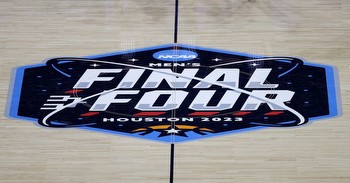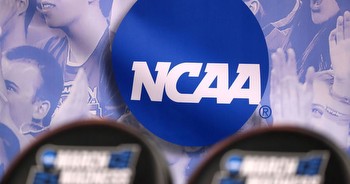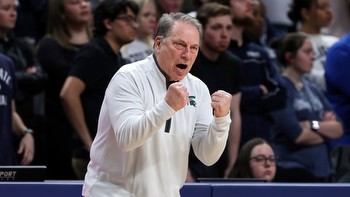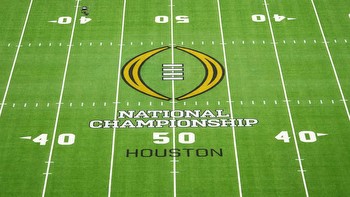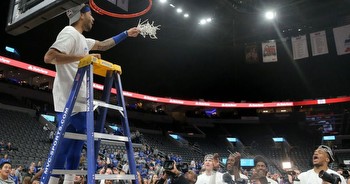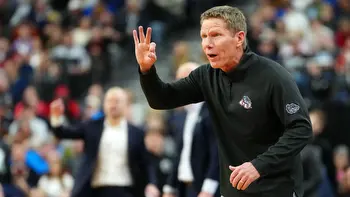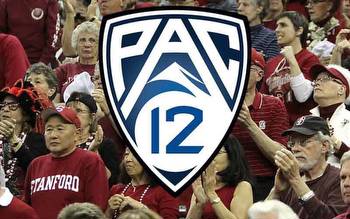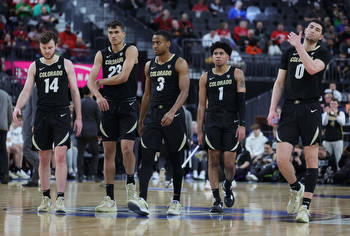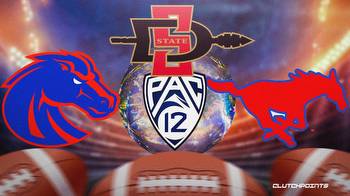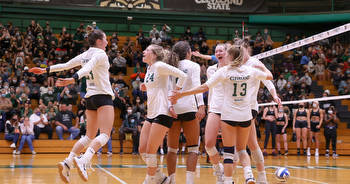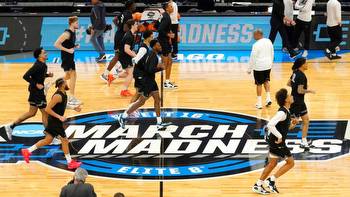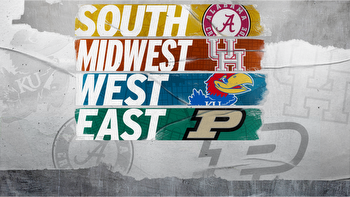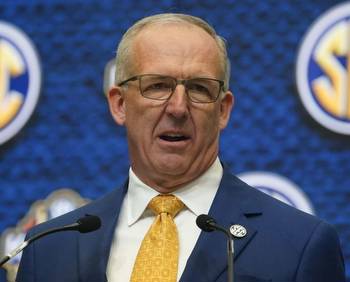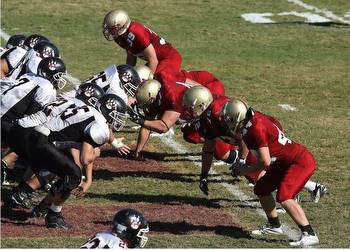Why conference realignment might force the NCAA Tournament to expand to survive
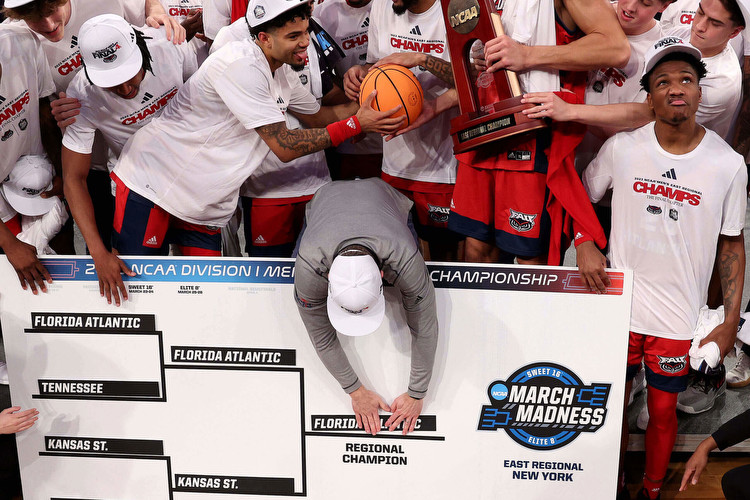
College basketball’s best defense against expansion could, ironically, be expansion.
In January, the NCAA’s transformation committee floated the lead balloon, arguing that for sports sponsored by at least 200 schools, at least 25 percent of the teams ought to have access to the championship. In other words, grow the 68-team NCAA Tournament bracket. It was met with the expected grumbles from basketball purists who preferred the football guys stay away from the last sacred cow in college athletics.
As recently as July, the Division I basketball committee said it had discussed expansion but that no decisions were imminent.
That, however, was before college athletics went haywire yet again. Now, with conferences ballooning memberships and cannibalizing the century-old Pac-12 in the process, even hoops folks are grudgingly coming to recognize that a bigger bracket might be the best way to ensure the NCAA Tournament’s future. A future that, by the way, is not exactly off in the distance. Multiple sources told The Athletic that a stretched bracket likely needs to be in place in time for the 2025 tournament, after the reorgs in the Big Ten, Big 12, SEC and ACC take over.
The reason? Simple preservation.
Multiple sources who have worked with or served on the NCAA Tournament selection committee agree that a small compromise in expanding the field — somewhere north of the current 68, but ideally less than 96 teams — could serve as the ideal best olive branch to prevent the real threat to the whole operation: namely that the football-playing schools opt out of the tourney altogether, and form their own.
Since conference realignment began, folks have feared a fracture between the football-playing power schools and everyone else. That led, initially, to a decent dose of football autonomy/forgiveness from the NCAA 10 years ago, and even more independence this year, with the restructuring of the NCAA governance model allowing sport-specific silos. But the threat never really went away, and as the football Power 5 shrinks to the Power 4, and the expense of doing college athletic business continues to rise via name, image and likeness, it feels even more real now than a decade ago. “It’s definitely TBD right now, I’d say,’’ says a former NCAA Tournament selection committee member, who was granted anonymity in exchange for candor. “I don’t think it’s imperative, but it’s also not off the table.”
‘Why are we making all the other sports suffer?’ College hoops coaches on realignment impact
The beauty and appeal of the NCAA Tournament is that it is for everyone — that Florida Atlantic can make the Final Four in the same year that Florida doesn’t make the field. But there’s always been an undercurrent to that dynamic. Big-conference schools believe the field should skew to them since, almost universally, the champion comes from their membership (aside from UConn in 2014, which counts as an outlier, the last title winner to not come from a the football Power 5 or the Big East is UNLV in 1990). Yet the small schools are what make the tournament the tournament.
Everyone wants Cinderella … until Nevada gets an at-large bid out of the Mountain West and North Carolina doesn’t. “It will 100 percent come down to how people handle it, because there will be pressure,’’ says former Michigan State athletic director Mark Hollis, who served on the committee for five years and chaired it in 2017. “My concern is that the small problems evolve into something bigger, where people get so agitated they go off and do their own thing.’’
Selecting the field is hard. It just is. For years, the committee has been accused of leaning one way or another — too much in favor of the power conferences or tilting too hard toward the mid-majors. No analytic — not the NET, the RPI, strength of schedule — can accurately distinguish between the apples and oranges of the 360-plus teams in Division I hoops. Nor can human biases ever be fully eliminated. For every person on the committee who studies the nitty gritty sheet and analyzes the numbers, there is someone who goes with his or her gut — and neither, really, is wrong.
Nothing gets easier as the leagues consolidate. Not bracketing, what with avoiding matchups of conference opponents; not seeding; and above all else, not selection.
Already things tilt toward the big boys. Of the 36 at-large bids issued last year, 32 went to teams that will be members of the Big Ten, ACC, Big 12, SEC or Big East next year. The Mountain West (three) and West Coast Conference (one) snagged the rest.
West Virginia, with a 7-11 record in the Big 12, earned an at-large bid based largely on its Selection Sunday NET ranking of 25 and 19 games against Quad 1 opponents. Except 16 of those Q1 games were also Big 12 games. Similarly Penn State, which ranked 48th in the NET on Selection Sunday, got a bid on the strength of its seven Quad 1 wins. But all but one of its Q1 games came against Big Ten opponents. “The NET is only one metric, but when you now start looking at quad games, you’re going to be looking at a lot of conference games,” another former committee member says. “How will that work?”
Technically, conference record doesn’t matter to the selection committee. Every team is meant to be measured on its own merit, as if all 360-plus are independent entities. Except, no. That’s not really possible. If your conference is good, it matters. The ACC was terrible last year; it cost the Tar Heels. The Big 12 was great; it helped the Mountaineers.
So what happens when the conferences bloat even further? The Big Ten earned nine bids in both the 2021 and 2022 tournaments; in two years, the league will include UCLA, USC, Washington and Oregon. Since the COVID-19 canceled tourney, the Bruins and Trojans each have made the field every year and the Ducks have appeared once. Last season, the four schools finished with NET rankings of 4, 55, 45 and 124 respectively, out of a league that ranked fifth at KenPom. Insert them into the second-best league, and what happens? “It’s simple math,” an administrator says. “You can’t say Oregon gets to go and now Illinois doesn’t because there are too many teams.’’
What would an 80-team (or 96, or 128) NCAA Tournament look like? Hint: It's not pretty
Compound that with the plight of the mid-major teams, which, on a good day, struggle to schedule name-brand opponents. Just how many league games each conference will now play is TBD (and, let’s not forget what an imbalanced schedule does to measure teams), but odds are finding room for quality mid-major opponents isn’t going to get easier.
None of it, frankly, is going to get easier.
“They made these decisions for financial reasons and for football,” says retired Princeton athletic director Gary Walters, who chaired the committee in 2007. “It should not impact the integrity of the NCAA Tournament at all. The NCAA Tournament is the last barometer of integrity in college athletics. I hope they don’t mess with it, but it’s going to take a lot of strength of character to maintain the balance of fairness.”
Either that, or maybe it turns out the best way to preserve the integrity of the NCAA Tournament is to expand it.








